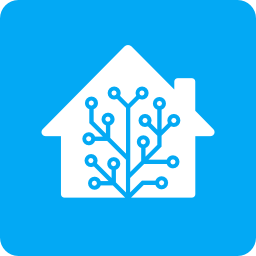I have had around a dozen smart bulbs/switches/plugs from three companies for 5-10 years now. Globe Suite, Meross, and ‘C by GE’ (General Electric). All three are dependent on their respective cloud services, and are integrated with Google Home. (I know, I know… It’s time to dump this crap, it’s why I’m here) Globe Suite has been great tbh, but ‘C by GE’ is absolute trash, and one of the two Meross devices have now died, prompting a long awaited change.
My big sticking point is knowing where to start with hardware. I don’t know much about the different communication protocols/methods or what to choose (zigbee? Z-wave? Do I need some sort of Hub? Can/should I just use a wifi connection like the current setup? 🤷), and I don’t really know where to look to purchase smart devices that aren’t cloud dependent. (buying from Canada)
Funds are tight so this’ll be an over time project. For now I’m looking to replace three switches. One single pole. One 3-way. Ane one dimmer. Neutral wires are available at all three locations.
Later I’ll be looking to replace 3 smart plugs. Adding current/power monitoring would be neat, but definitely not a priority as I have an Iotawatt at the pannel. After that 4 dimmable white light smart bulbs. Finally there’s an RGBW LED controller that’ll need replacing. The plugs, bulbs, and leds are all Globe Suite; I’m not in a major hurry to replace them as they’ve given me next to no trouble compared to the other two companies garbage.
Where do I start? Where do you guys buy hardware, and what manufacturers?
What should I be looking for in hardware I can integrate with HA and essentially firewall off from the internet?
Finally, how about things like sensors? (weather, motion, moisture, sound)
The next week or so I’ll fire up an HA container just to poke around a bit more. That part I’m pretty confident in, it’s just figuring out some hardware to go with it. Thanks for any advice :)
First off, have you got HA up and running yet? That should be your initial focus.
There are 3 main options.
- Old laptop
The cheapest option, but only if you have a spare. It doesn’t need that much grunt. You definitely want to check how much power it draws however. It’ll be on 24/7 and the cost of that can mount up.
- Raspberry Pi (or other single board computer)
This is a good “play around” option. It’s one of the cheapest choices as well. Unfortunately, Pis can become a bit unstable down the line.
- NUC, or other mini PC. The small mini PCs are my preferred recommendation. They are powerful enough to do more complex tasks, but power efficient enough to not be problematic. They are also a lot more reliable than the SBCs.
As for other hardware. Z wave is the best, but also more costly. ZigBee is cheaper, and still very functional. WiFi does the job, but needs a bit more planning. I personally use a mix of ZigBee and WiFi.
If you’re buying WiFi hardware, I would try and focus on esp based options (ESP8266, ESP8285, or ESP32). You can replace the firmware in these, with either Tasmota, or ESPhome. I personally use sonoff and/or athom hardware, but there are plenty of other options.
This might help finding appropriate hardware.
See if you can reuse the hardware you have. Some „proprietary” lightbulbs are actually Zigbee and all you need is a Zigbee coordinator (an adapter to communicate with them, which works regardless of vendor). See zigbee2mqtt
HomeAssistant will run on a Raspberry pi just fine but don’t expect to run a bunch of add-ons that way and things like Frigate with a few cameras will not work very well. So if you are not sure what you will be running in the future a mini pc is a good idea then you can install most any add-ons you like. The only thing you will need to pickup is a USB adapter for zigbee, z-wave, matter, or Bluetooth and if you decide to run cameras a Google Coral for object detection. You can run HomeAssistant using Docker however you will need to manage this much more than using HAOS. Unless you really want to deal with nitty gritty stuff you will lyrically want to use the HAOS version, https://community.home-assistant.io/t/home-assistant-installation-methods/207703
While HomeAssistant has features for automatically doing things you will probably want to install NodeRed for more complex automations. It’s well worth it especially if you want something randomized. I use it to select my porch RGB LED strip sequences randomly as well as my RGB LED address light sequence. They come on automatically at sundown and change or turn off at specific times throughout the evening. The porch strip changes to a bright white when a motion sensor is triggered or when a tracked device comes into the home zone.
I started of using 100% wifi based this and built all of my sensors based on ESP8266’s and ESP32’S using ESPHome. I’ve recently started adding zigbee since flashing stuff over is getting more difficult/nearly impossible outside of a few wifi based devices. I actually started using Sonoff ZBMINIR2’s for switches and plugs, the “switch” legs on the ZBMINIR2 can accept high voltage but when wired through a switch alone they are only 5v dc so I’ve used a couple to make in line cord switches with some simple push buttons in a hobby box for some lights I have. I’ve also installed them in receptacle boxes and turned a single outlet into a zigbee switched one. I’m using a sonoff zigbee dongle-e with ZHA as my coordinator and so far is been working perfectly.
Adding a zigbee device using ZHA is as simple as opening up HomeAssistant going to the settings/devices/zigbee and clicking on add device. Set the name and location and you are done unless you need to change a setting in the device. The ZBMINIR2’s by default are setup to work with toggle switches but can be used with intermittent pulse buttons as well by just changing a setting for the particular device.
My RGB LED strips are controlled using ESP32’s and WLED. My front porch strip is u hay under 1500 individual pixels and my address numbers are about 100.
I currently track my power usage with ESPHome on an ESP32 with CircuitSetup’s split phase energy meter kit. But hopefully in the next couple months I will have an Enphase system in place that will handle the majority of that along with solar production. I also have a simple water meter with a pulse output connected to an ESP8266 that feeds data into HomeAssistant as well.
If you are looking for premade sensors you can find a ton of different ones that are available for zigbee or z-wave but if there is something special you want search what ESPHome supports and add them in. I actually track vehicle battery voltage at home using an ESP8266 and ESPHome.
One of the potential issues if you live in town with a lot of WiFi AP’s around you is that some of the zigbee channels can overlap with WiFi frequencies in the upper 2.4ghz range (channel 11 mainly) so that can cause some issues with stuff that is further from your coordinator, however many zigbee devices when hooked to mains power will also act as relays so it’s simple enough to add a ZBMINIR2 to a switch at an in between point. I’ve honestly never had an issue and I run multiple WiFi AP’s in my own home and have neighbors with a couple routers. Z-wave is not the same but I believe the devices run a bit more and z-wave is a part of the matter/thread ecosystem and has a much longer range (up to 800 meters) but runs slower as it’s in the 900mhz range. I highly suggest taking a look at the protocols and compare them for your particular needs https://en.wikipedia.org/wiki/Z-Wave#Comparison_to_other_protocols
A small note about long range wireless signals. Having something that can operate 800 meters away since great, but remember there will be someone who also thinks it may be fun to try and hack stuff and the further your signal reaches the more chances it will be spotted. Years ago I used to encourage people to secure their ap’s by changing the SSID to something very colorful and change the passwords.
Personally, I try to avoid wifi devices, because they tend to communicate through a central server, and it’s harder to be sure they aren’t secretly phoning home. Zigbee and Zwave intrinsically lack internet connectivity, so they are necessarily local-first. My network is Zwave - no experience with zigbee - and it’s been great. Devices all have a little QR code that you can scan to add the device to HA, whenever the device gets powered up. Good range of available devices, from switches & lights to environmental sensors. Most of my devices are Minoston or Zooz, bought from their websites; haven’t had any trouble. Honeywell thermostat. Aeotec outdoor thermometer.
I run HA in a container on an RPi, and I have some sensors running off the Pi’s GPIO. Actually started with the GPIO sensors and only got HA running because its visualizations looked easy. Those sensors include temperature, CO2 and airborne particulates.
I am pretty much doing the exact same thing except I went all in on Zigbee instead of Zwave and I can share that it’s pretty great as well. One of the reasons I went the Zigbee route is because I owned some IKEA smart devices and Phlips hue devices and both of those use Zigbee. Using Zigbee also allowed me to continue to purchase smart devices from IKEA with easy integration.
You can also just do both Zigbee and Zwave. The only thing you need to make sure is to try to build a good mesh for both so that you don’t run into connectivity issues. IIRC ZIgbee and Zwave do not share a frequency so you shouldn’t have any interference issues.
For your RGBW LED controller, I really like the WLED ones from GLEDOPTO.
Any tiny mini PC or RPi will work for the most part unless you plan on hosting media or doing LLM integration. Just make sure it has all the comms and ports you want before ordering one. Minisforum Refurb store has great prices on small devices that beat the price of an RPi kit in most cases and come with a warranty as if new.
I used to run everything on Zigbee because ZWave had one too many vulnerability issues at the time. I think both are being overtaken by Matter devices, so I’ve been adopting those more and more. Set up a dedicated WiFi network for those that doesn’t have direct route to the internet, and you’re all set.
As for sensors, just stick to known brands that don’t require a cloud account or gateway. Moe’s, Aqara, and Sonoff are all fairly well known to “just work” in this regard.
For the Home Assistant install, I would suggest a mini-PC. I run mine on an old Intel NUC. The mini-PC will give you more flexibility as you add and expand automation. I had read of Raspberry Pis bogging down under load (this was pre version 4 and 5). But even the NUC bogs down with local voice assistant use. I’m thinking of building my own, local LLM computer to offload voice. Eventually.
As far as other hardware, I’d go with the ZBT-1 (formally called SkyConnect) for Thread support, which is the new kid on the protocol block and we’re starting to see a good set of devices.
After that you’ll have to make a choice between Zigbee and Z-Wave, and buy a dongle for one of them to attach to HA to get the functionality. Both work solidly. Z-Wave devices tend to be more expensive because of the rigorous testing Z-Wave certification requires. Zigbee is cheaper, but it works on the 2.4Ghz spectrum, same as Wifi. It can lead to some interference if you still have a lot of old Wifi devices. You’ll have to look and see what kind of devices you want to run, what they cost, and decide from there. Personally, I went Z-Wave and most of my light switches are Z-Wave. it’s been solid but pricey. Hoping to see more Matter/Thread switches soon.
You’ll see a lot of Matter talk. Matter comes in two flavors, Matter/Wifi and Matter/Thread. Matter is a framework for devices to talk to automation hubs to tell them what functionality/sensors are available, Wifi/Thread is the protocol it communicates to the hub and other devices. I look for Thread devices since it is more like Zigbee/Z-Wave (Thread from what I understand is based on Zigbee). It builds an internal mesh network and keeps everything local, and it can’t communicate over the internet by itself.
If you don’t mind a bit of tinkering, I can recommend the Home Assistant Voice Preview devices. It is a voice device that talks to HA to be the voice front end. It is not nearly as polished as Google Voice or Alexa, but since I regulated Google Voice to basically be a voice front end to HA, it has been a decent replacement.




